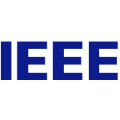
This handbook outlines all test methods developed under the Development and Execution of Comprehensive and Integrated Subterranean Intelligent Vehicle Evaluations (DECISIVE) project by the University of Massachusetts Lowell for evaluating small unmanned aerial systems (sUAS) performance in subterranean and constrained indoor environments, spanning communications, field readiness, interface, obstacle avoidance, navigation, mapping, autonomy, trust, and situation awareness. For sUAS deployment in subterranean and constrained indoor environments, this puts forth two assumptions about applicable sUAS to be evaluated using these test methods: (1) able to operate without access to GPS signal, and (2) width from prop top to prop tip does not exceed 91 cm (36 in) wide (i.e., can physically fit through a typical doorway, although successful navigation through is not guaranteed). All test methods are specified using a common format: Purpose, Summary of Test Method, Apparatus and Artifacts, Equipment, Metrics, Procedure, and Example Data. All test methods are designed to be run in real-world environments (e.g., MOUT sites) or using fabricated apparatuses (e.g., test bays built from wood, or contained inside of one or more shipping containers).
翻译:本手册概述了在马萨诸塞大学洛韦尔大学开发和实施综合和综合地下智能车辆评价(DEISIVE)项目下开发的所有测试方法,以评价小型无人驾驶航空系统在地下和受限制室内环境中的性能,包括通信、战备状态、接口、障碍避免、导航、绘图、自主、信任和情况意识;关于在地下和受限制室内环境中部署小型无人驾驶航空系统,本手册对应用这些测试方法评估的适用小型飞行器提出了两种假设:(1) 能够在无法获得全球定位系统信号的情况下操作,(2) 从顶部到底部宽度不超过91厘米(36英寸),宽度不超过91厘米(36英寸)(也就是说,能够实际穿透典型的门,尽管无法保证成功航行);所有测试方法都使用共同格式:目的、测试方法摘要、阿帕特拉图和人工工艺、设备、气象、程序和示例数据;所有测试方法的设计都设计在现实世界环境中运行(例如,MOT站点),或使用一个或更多的木质容器(例如,制成的或装好的容器)。


